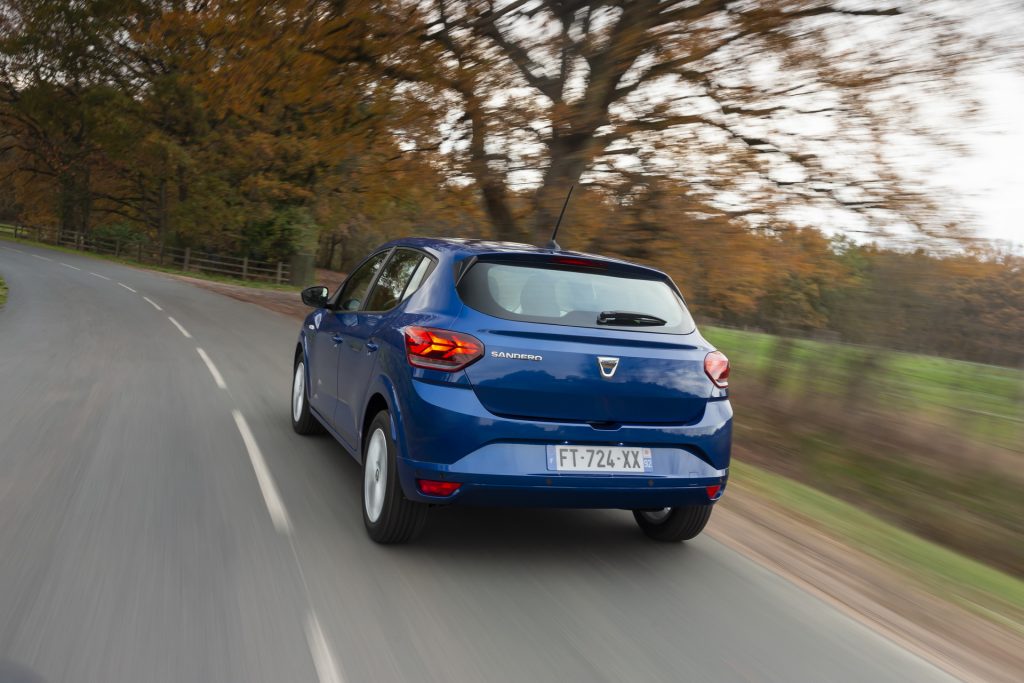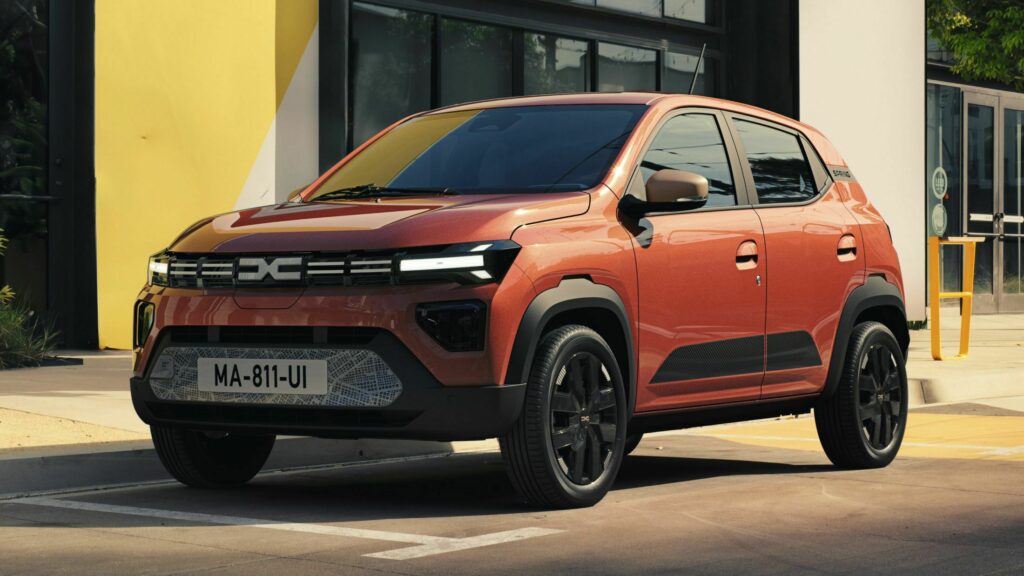- The brand isn’t interested in a huge range and quick charging.
- Much like the smaller Dacia Spring, the Sandero EV will likely aim at affordability first.
- Dacia will retain the same CMF-B architecture as the current model in the 2027 redesign.
The Dacia Sandero was Europe’s best-selling new car last year, but the brand isn’t willing to rest on its laurels. A fourth-generation version has been penciled in for 2027, and according to the brand’s CEO, it will include an all-electric version.
An electric version of the Sandero has great potential for the brand if it’s priced right. The existing model is the cheapest hatchback in its segment in Europe, and in some markets like Germany and France, it starts at less than €10,000 (~$10,400). While the sales growth of EVs slowed last year, they continue to rise in popularity across many key markets, and an affordable Dacia EV could tick the boxes of many buyers.
Read: 2024 Dacia Spring EV Gets Duster-Inspired Looks And An Overhauled Interior
While recently speaking about Dacia’s 2024 sales, boss Denis Le Vot said the new model will use the same CMF-B architecture as the current car, noting that it’s still fresh.
“There is no reason not to continue on the same platform,” he said to Car Magazine UK. “The platform is new, starting five years ago, and the electronic architecture is younger than that as it popped up as General Safety Regulations 2 arrived.”
By using this platform, Dacia could equip the electric Sandero with similar motor and battery technologies to the Renault 4 and Renault 5. Importantly, prospective buyers shouldn’t expect to see the Sandera EV launched with ultra-fast charging and a huge driving range. According to Le Vot, Dacia needs to achieve “accessible mobility.”

An affordable EV for the masses
“Every car maker is trying to put out its top solution for electric, which means 500-600km of range and a 20-minute charge on the highway, right? We are certainly not going to do that,” he said. “Why? Because we have a social role here. Our job is accessible mobility and that includes electric. We brought out the Spring because of that.”
The Dacia Spring has been around since 2020 and was thoroughly updated last year. The urban EV for the masses is smaller than the Sandero and is one of Europe’s cheapest new EVs. It features a tiny 26.8 kWh battery pack and a single electric motor available in 44 and 64-hp guises. Low-spec models come with an 11 kW AC charger, while higher-end models add DC fast charging, but it’s capped at just 30 kW.
Le Vot revealed Dacia is investigating different battery chemistries to ensure the electric Sandero is affordable. He suggested a sodium-based battery may make sense because they’re cheap.
“We’ll find a way here with the range offered and between the density of energy and charging capacity to find something which is different,” he said. “The idea is that we will be accessible with it.”




